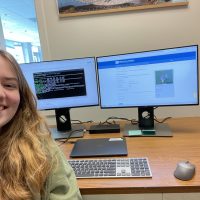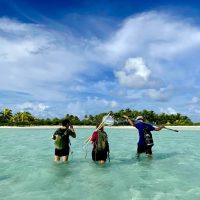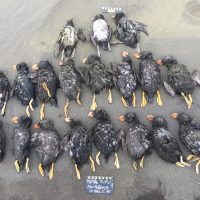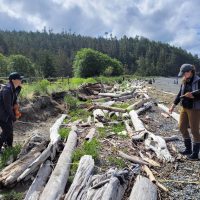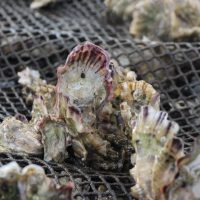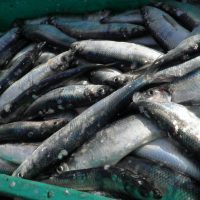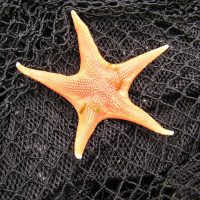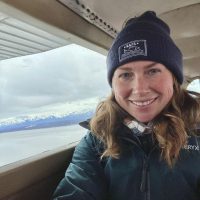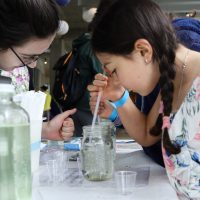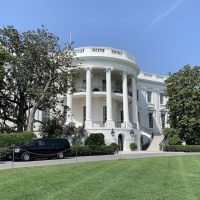Filter Results
Mutation rate and mentorship: undergrad summer research with dolphins
Spending the summer working on a mutation rate project with SAFS Professor Amy Van Cise, Sophie Garrote is using bioinformatics to delve into different dolphin species.
Part of a mentorship program through UW LSAMP which focuses on enhancing minority participation in STEM, Sophie has been picking up valuable skills such as programming, knowledge of cetacean species, and getting hands-on experience with research.
Birds, beaches and boat rides: conducting research in Tetiaroa
Almost 5,000 miles away from the University of Washington lies Tetiaroa, an atoll in French Polynesia surrounded by a ring of coral reefs.
A team of UW scientists have visted Tetiaroa each year since 2018 to study seabird populations, which play a vital role in marine environments and the islands that lie within them. A variety of factors negatively impact Tetiaroa’s seabird population, including invasive species and climate change.
Marine heat waves caused mass seabird die-offs, beach surveys show
New research led by the University of Washington uses data collected by coastal residents along beaches from central California to Alaska to understand how seabirds have fared in recent decades. The paper, published July 6 in the journal Marine Ecology Progress Series, shows that persistent marine heat waves lead to massive seabird die-offs months later.
Read moreShoreline restoration: community science to monitor effectiveness
Jason Toft from the UW Wetland Ecosystem Team has been monitoring shoreline armor restoration in Puget Sound for over a decade at sites where artificial armor on beaches has been removed to facilitate the restoration of intertidal areas.
Shoreline armor, also known as seawalls and bulkheads, occurs on over 25% of Puget Sound’s shorelines and was historically installed along homes and infrastructure to address erosion risk.
Exploring the foraging ecology of crabs and fish in Washington’s aquaculture areas
Washington State is the leading aquaculture shellfish producer in the United States and shellfish aquaculture has been a culturally and economically important part of the Pacific Northwest landscape for thousands of years. As part of his thesis project, SAFS master’s student, Karl Veggerby, explored the foraging ecology of crabs and fish inside shellfish areas.
The aim? To quantify how shellfish farms are used as foraging habitat for common nearshore species of fishes and crabs compared to unfarmed eelgrass meadows and mudflats.
First Nationwide Assessment of Non-Federally Managed Fisheries in the U.S.
A new study produced by The Nature Conservancy (TNC) and the University of Washington (UW), with the lead researcher from SAFS, provides the first-ever nationwide assessment of non-federally managed fisheries in the United States.
Read moreTwo decades of change in sea star abundance in Puget Sound
Since 1991, students and faculty at UW’s School of Aquatic and Fishery Sciences have conducted bottom trawl surveys in Port Madison through the School’s Fisheries Ecology course, creating an experiential learning opportunity for students and collecting valuable long-term data on physical and ecological change at a subtidal site in Puget Sound. Fortuitously, this long-term sampling gave students the data needed to investigate an unprecedented mass mortality event.
Read moreStudying Cook Inlet beluga whales with help from FINS
Our latest student feature highlighting the use of the FINS award is with Arial Brewer, PhD student in the Berdahl and Van Cise labs.
With the FINS award, I was able to use it for two different purposes – one involving presenting my research at a conference, and the other conducting fieldwork in Alaska.
In Spring 2023, I traveled to Olympia, WA and presented my research at The Wildlife Society conference in Olympia.
Read moreBringing science to life at the UW Aquatic Sciences Open House
Another year, another fantastic day of bringing science to life at the UW Aquatic Sciences Open House. Featuring 30 booths, each with an interactive activity dedicated to specific research underway in the world of water, this year’s Open House welcomed more than 600 visitors.
Making aquatic science accessible to all is one of the driving forces behind the Open House. The event is hosted by the School of Aquatic and Fishery Sciences, which sits on the south campus of the University of Washington and just across from Portage Bay.
Read moreSAFS, salmon and science at the White House
A testament to the essential science and research happening in the UW SAFS Alaska Salmon Program, Professors Tom Quinn and Daniel Schindler were invited to a White House event on May 11, recognizing the EPA’s decision to halt the Pebble Mine project in Alaska’s Bristol Bay.
UW scientists have been working in Bristol Bay’s streams, rivers and lakes for over 75 years through the Fisheries Research Institute, with the current generation of SAFS faculty active for over three decades through the Alaska Salmon Program.
